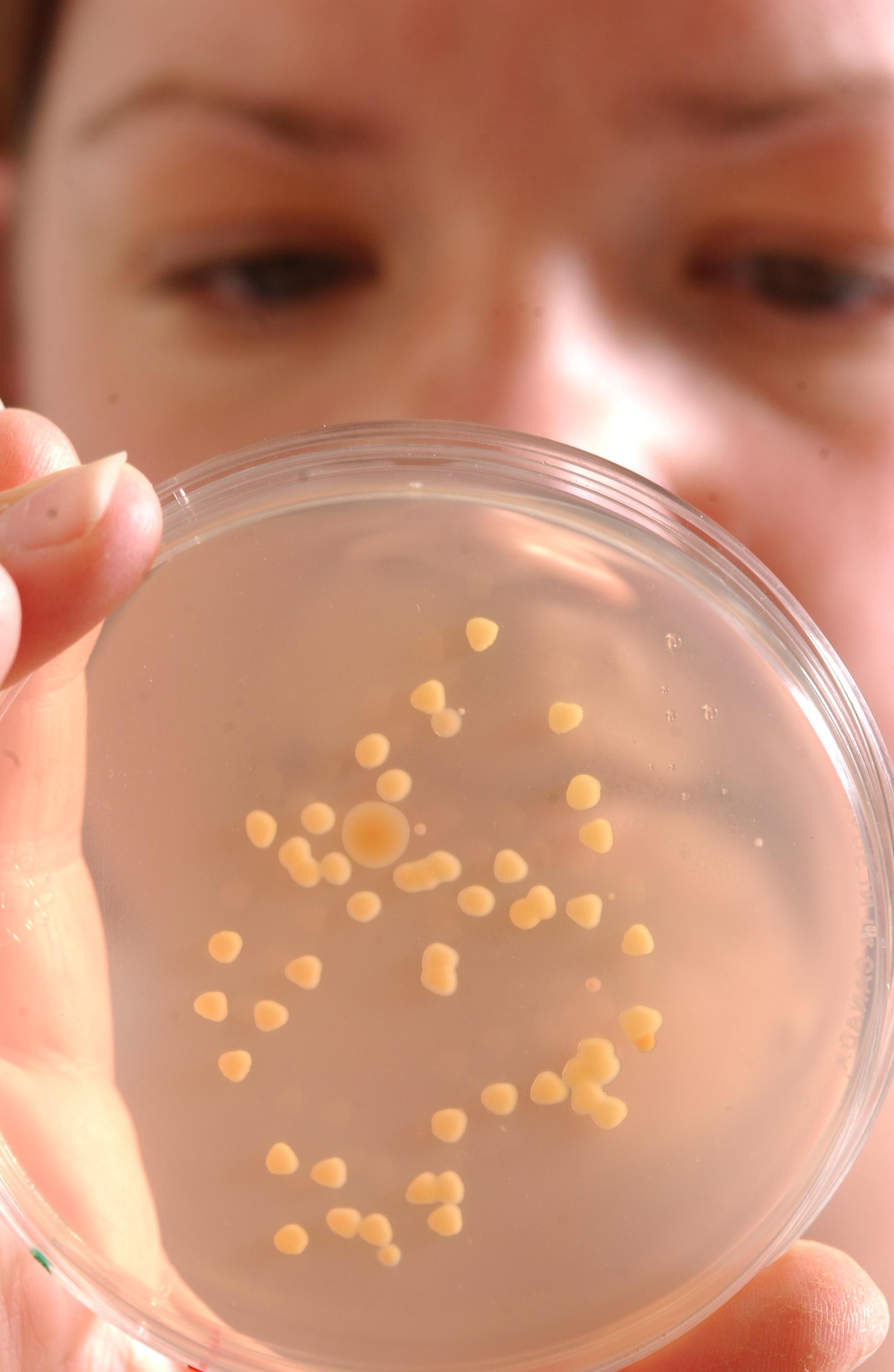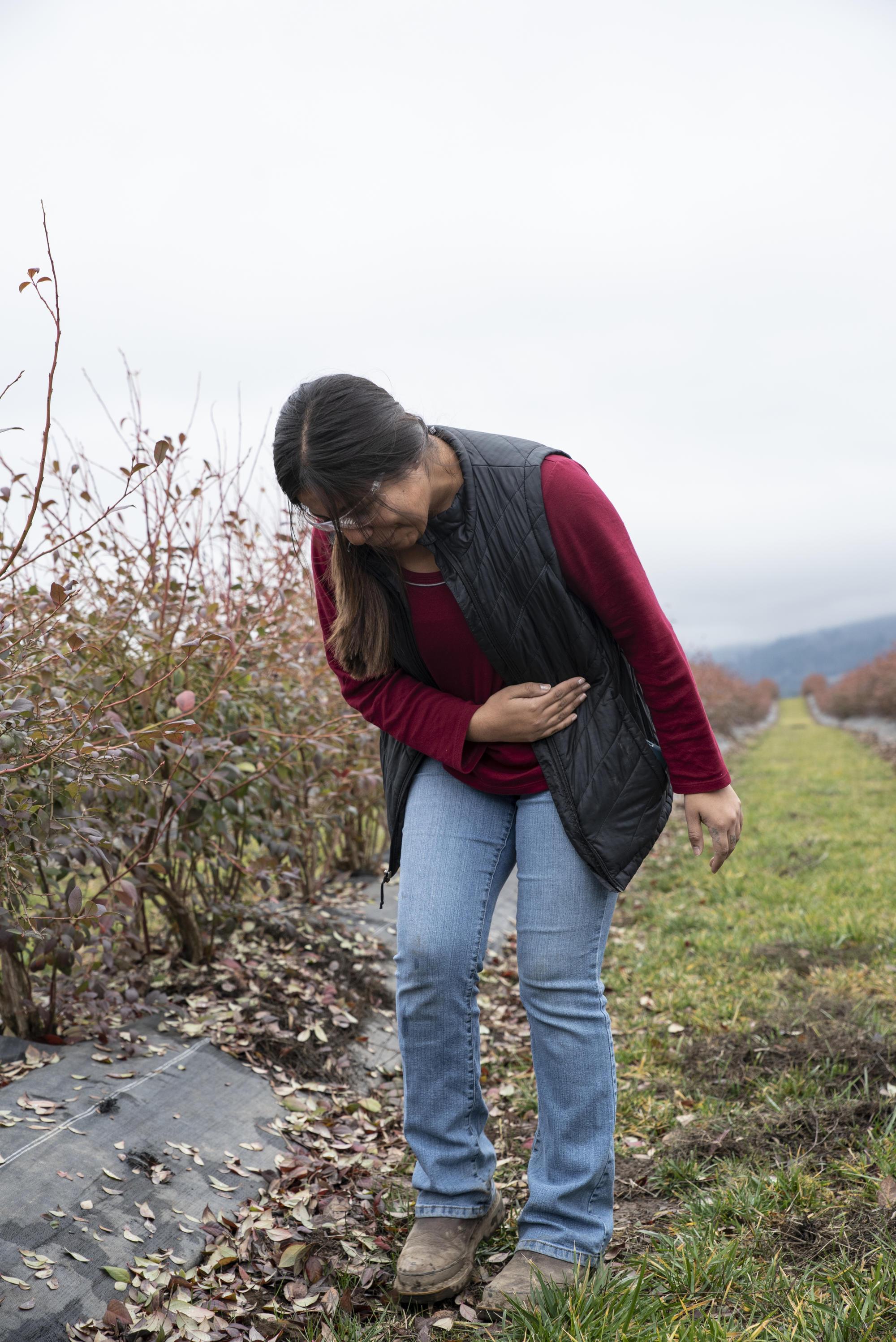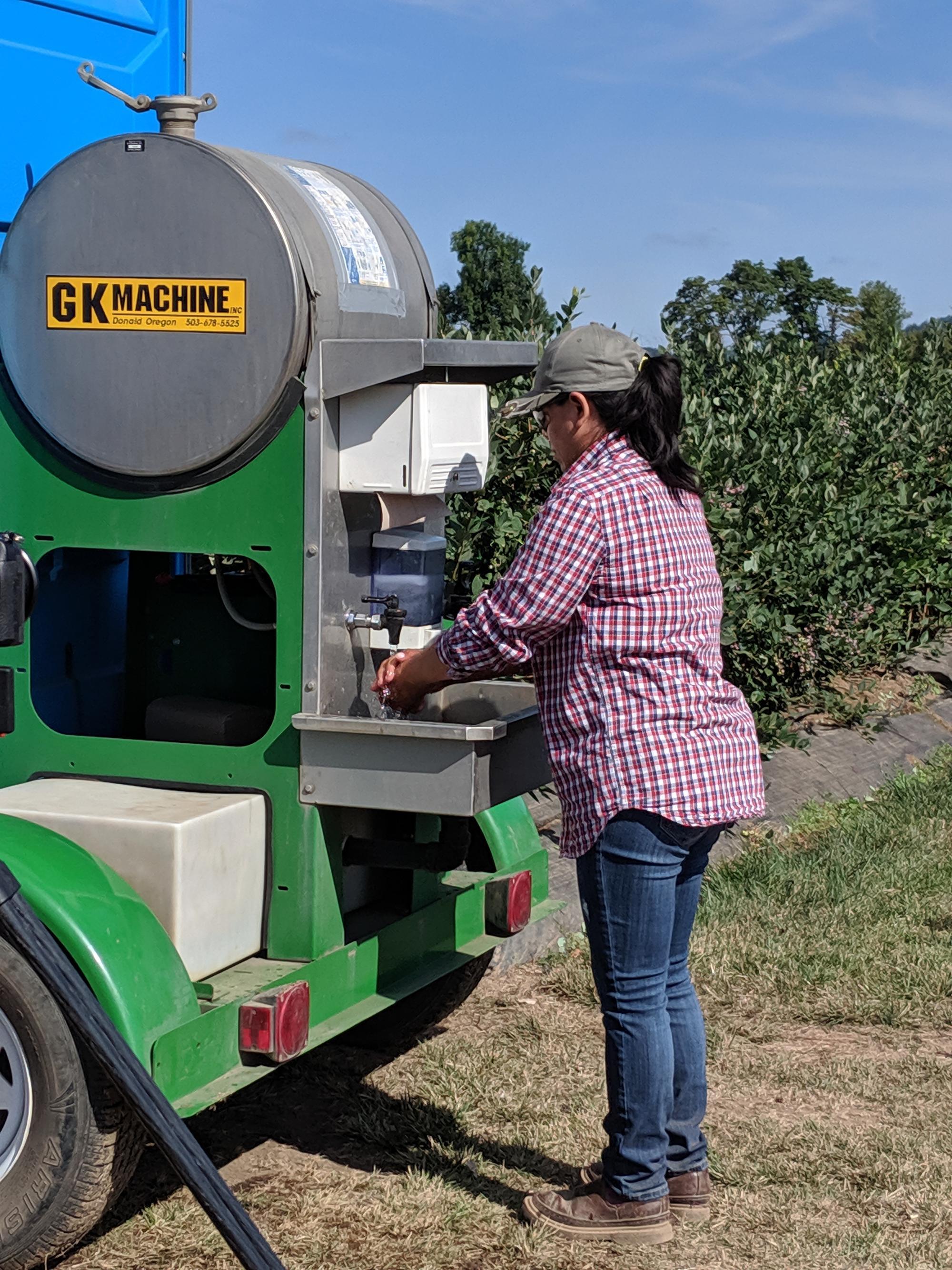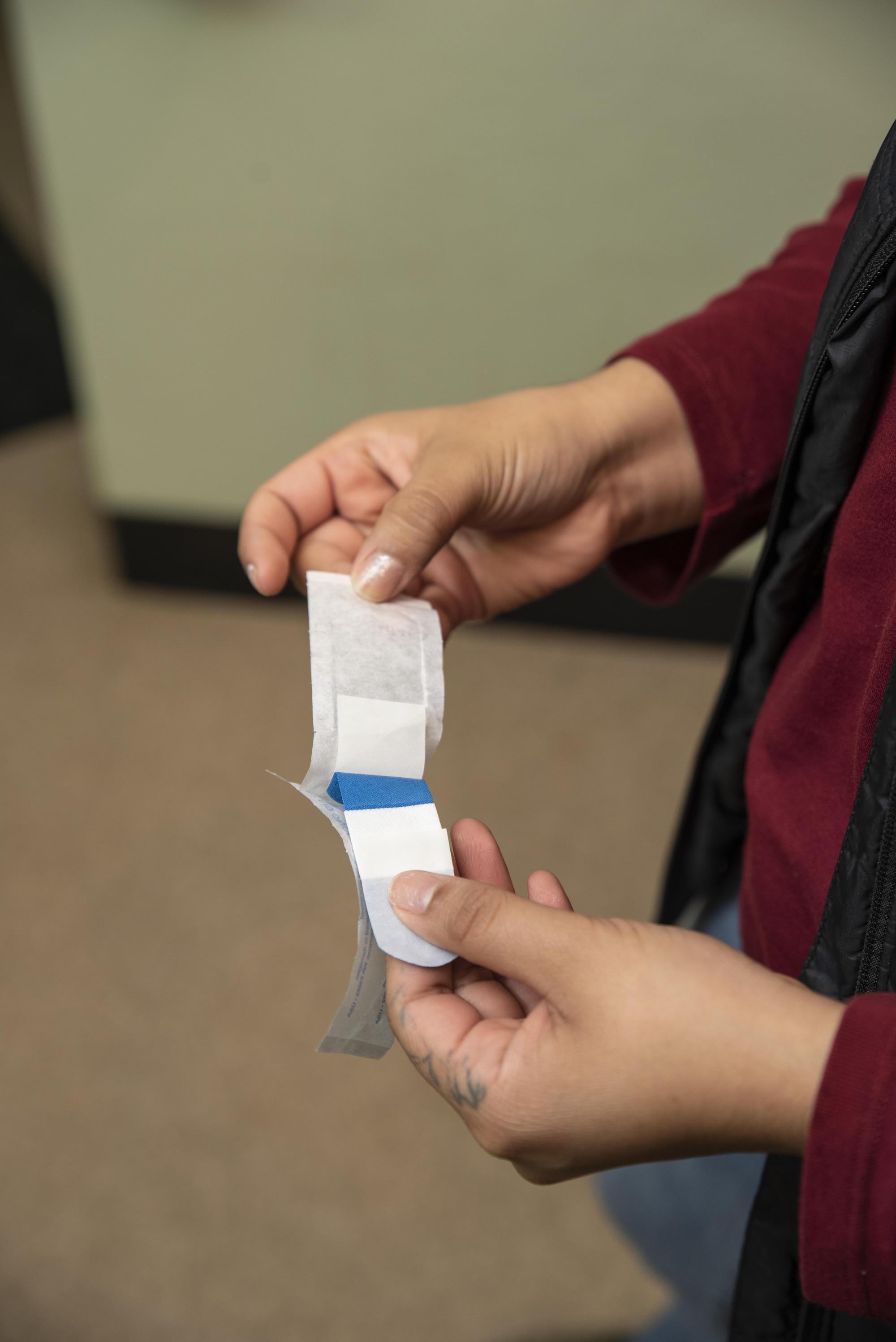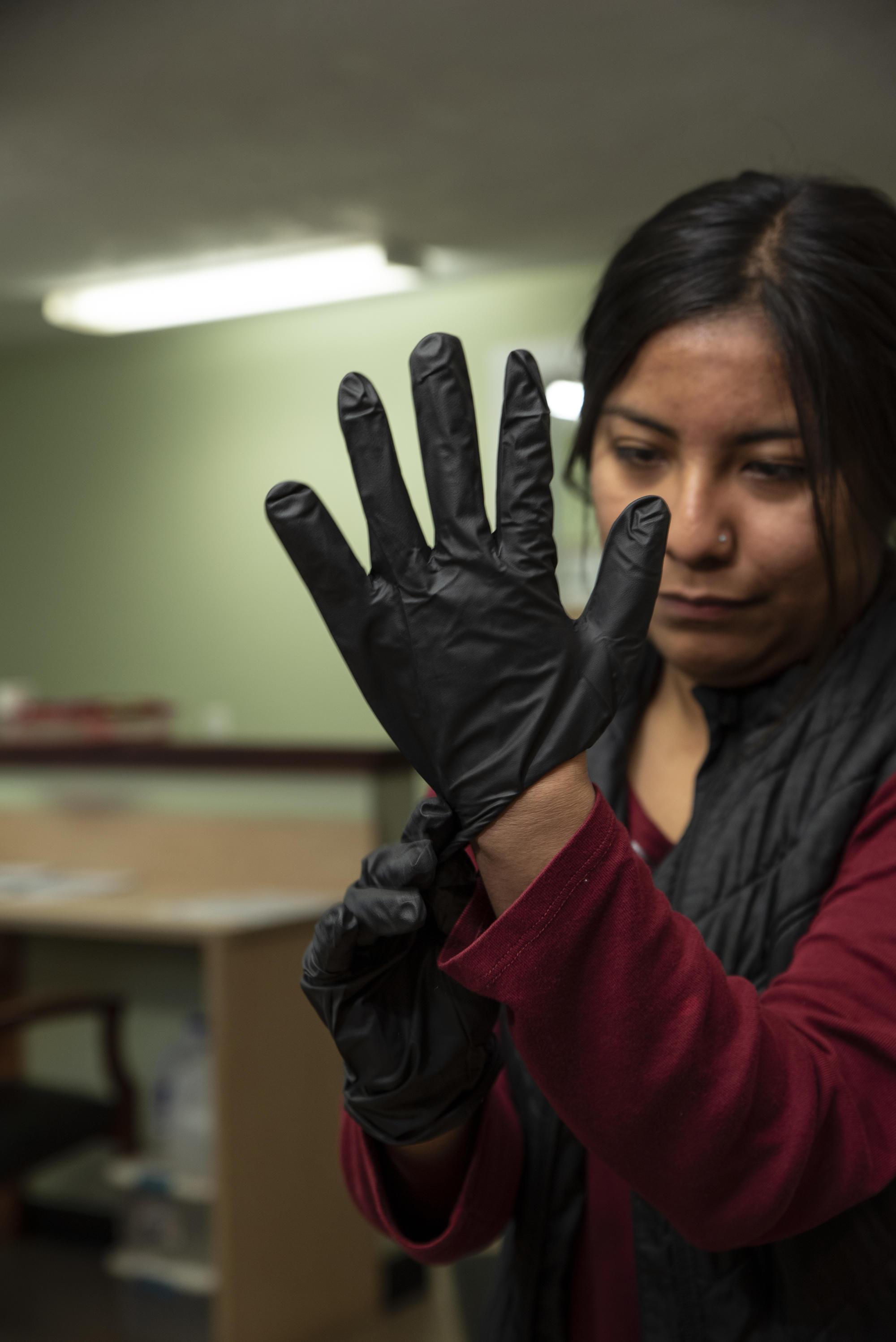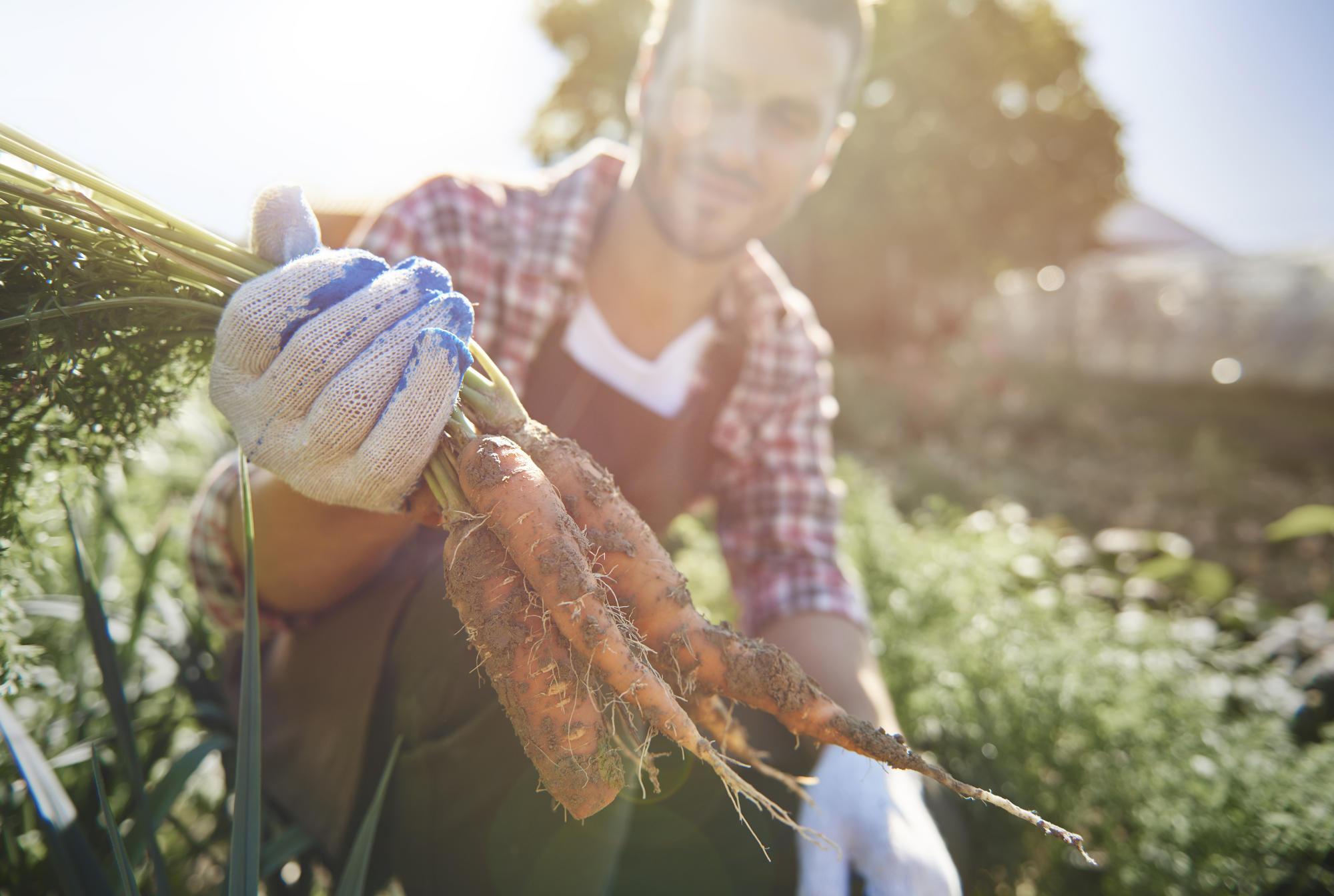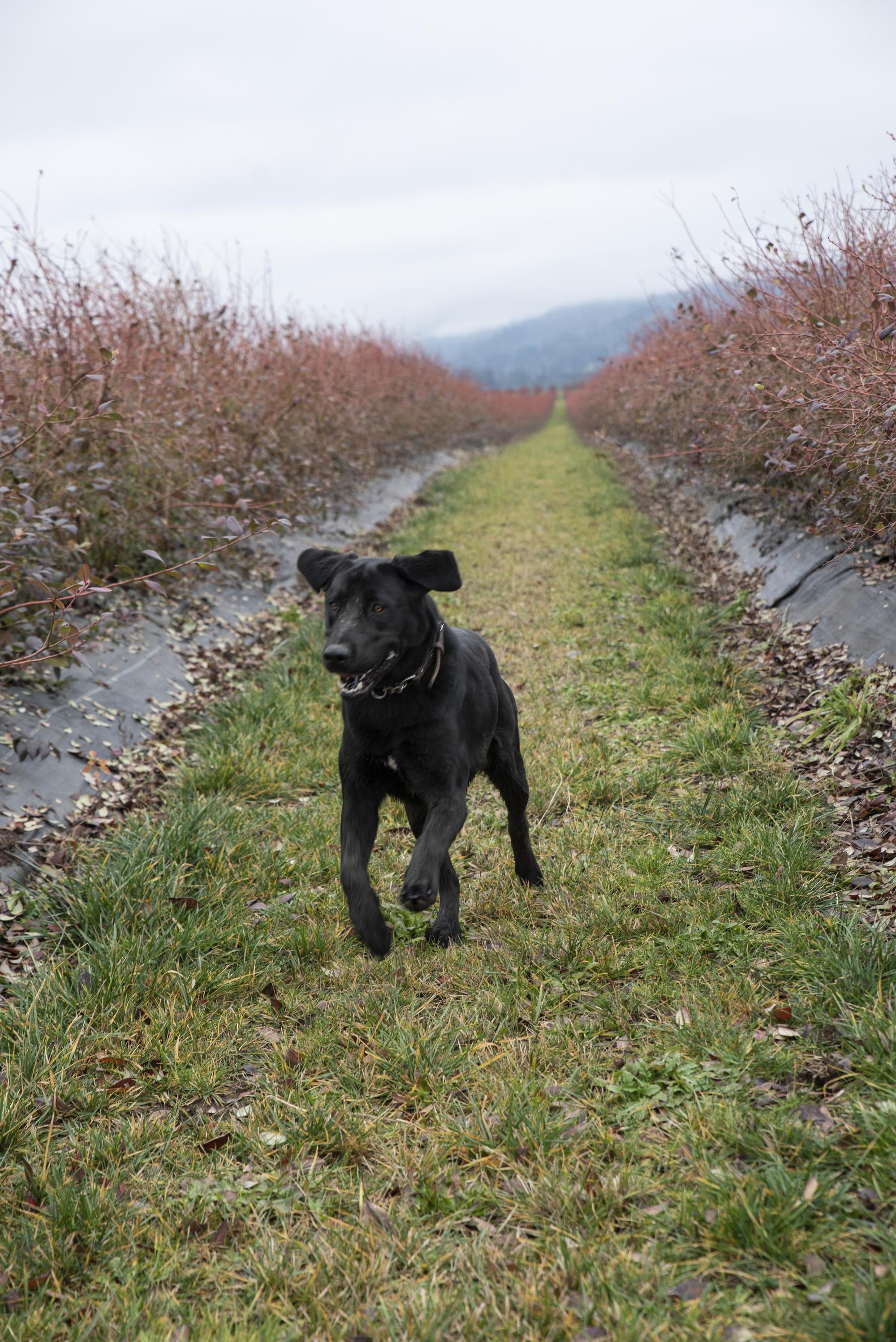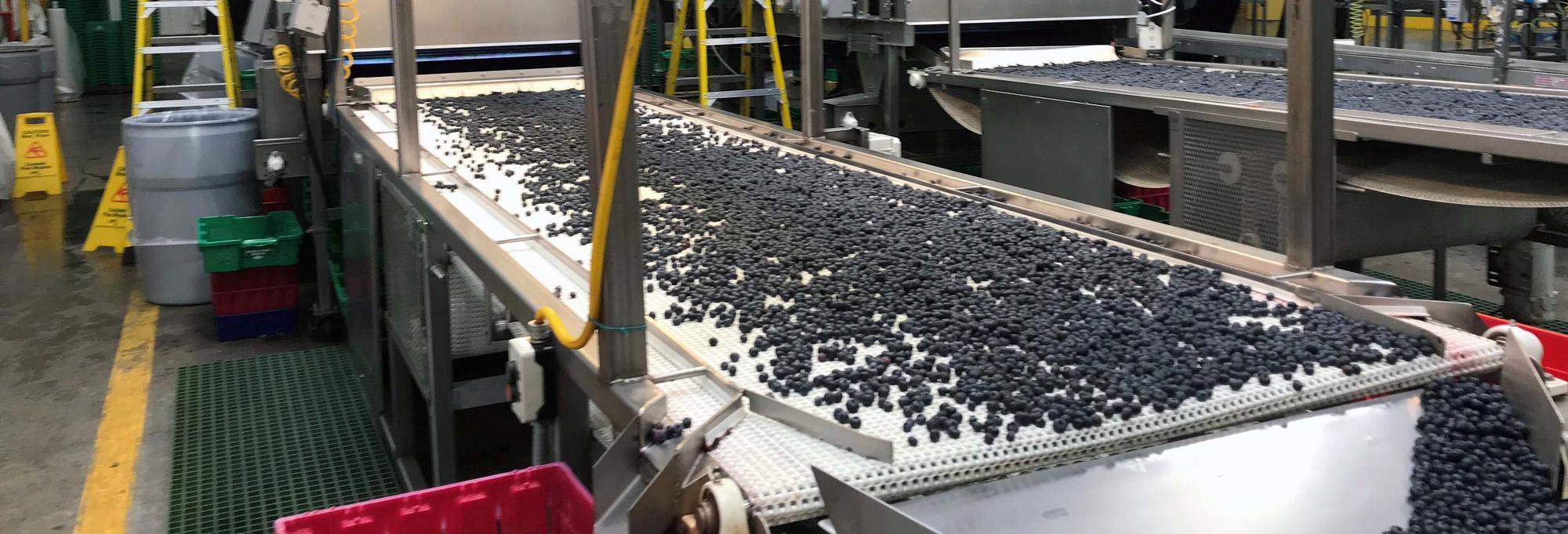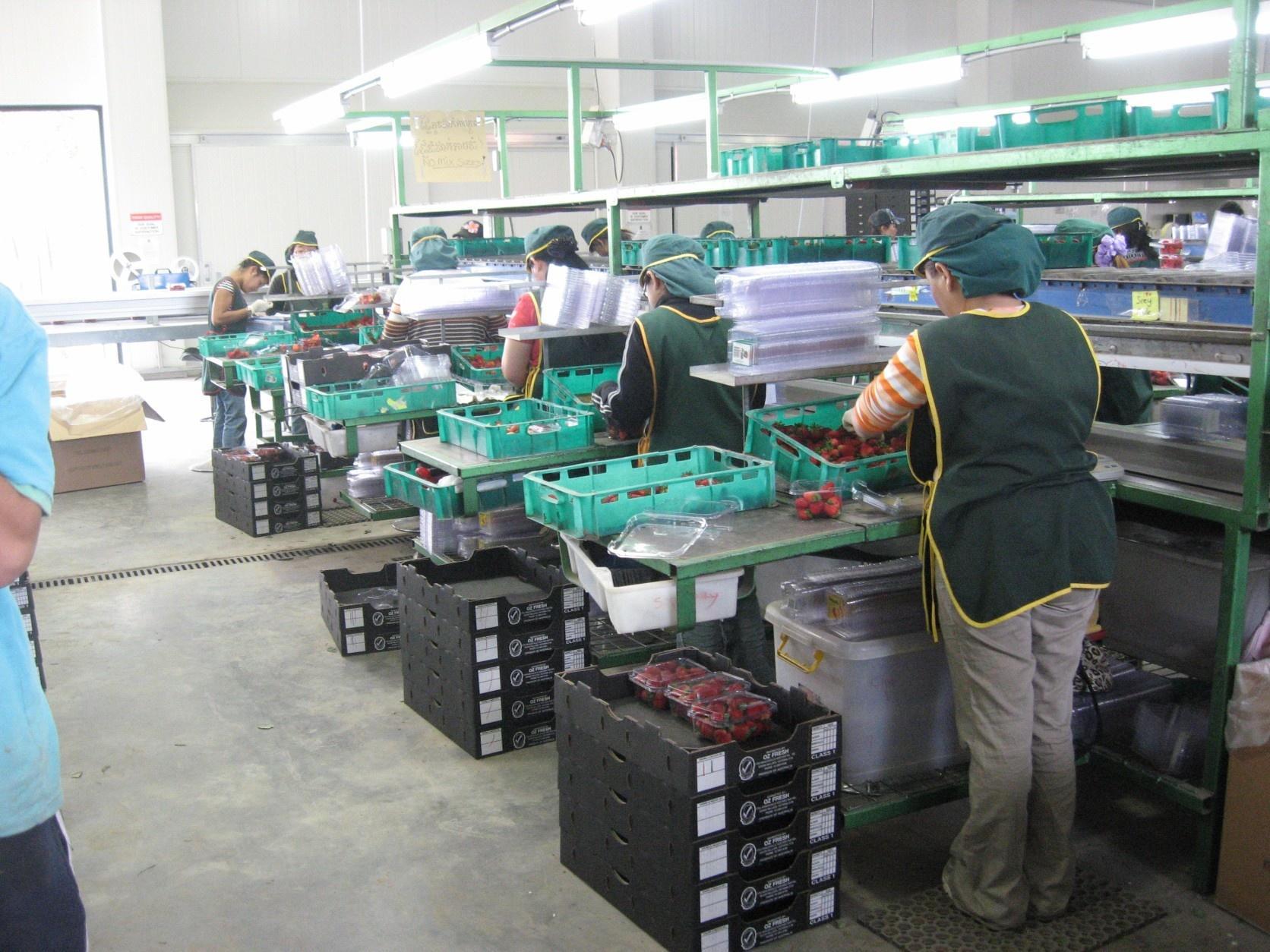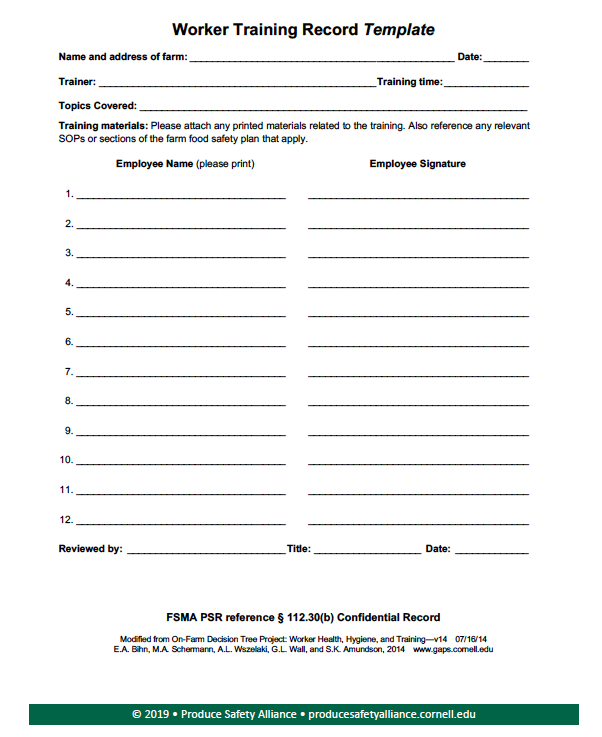Introduction
The goal of any produce farm is to grow fresh fruits and vegetables that are safe for consumers to eat and enjoy.
The Pacific Northwest is known for its high-quality delicious berries and other fresh produce. To preserve this reputation, all people involved in farm activities should be thoroughly trained in good practices that promote health and hygiene.
Farmworkers, growers, farm owners and trainers can use this bilingual manual to teach the importance of reducing the risk of food contamination by human pathogens. Each section details an important topic related to health, hygiene or food safety. At the end of each section, you will find questions to encourage discussion and review of the information. The questions prod users to review information and promote discussion. The answers may not be directly found in the preceding text.
The last section is dedicated to trainers. They will find information about the Food Safety Modernization Act and the Produce Safety Rule, as well as a checklist with recommended topics to cover during a food safety training. This manual is a general overview of food safety practices for any farm, whether covered by the Produce Safety Rule or not.
Remember, clean produce leads to happy, healthy consumers!
Section A. Keep pathogens out
Microbes
Microbes are small organisms that are present all around us. There are beneficial microbes, but there are also harmful microbes that can cause humans to become seriously ill. These harmful microbes are called pathogens.
The focus of this manual is on human pathogens that can easily spread through the different activities from the farm to the table (the food supply chain).
The Centers for Disease Control report that because of contaminated food, each year:
- One in six people in the United States gets sick.
- 48 million cases of foodborne illness are reported.
- 128,000 hospitalizations occur.
- 5,000 deaths result from foodborne illness.
Children and the elderly are especially susceptible to human pathogens, but anyone can get sick from these microbes.
Pathogen spread
Humans can spread pathogens by:
- Touching fruits and vegetables with dirty hands or saliva.
- Coughing.
- Sneezing.
- Spitting.
The threat is especially high in fruits and vegetables that are harvested and handled by humans and then consumed raw.
Microbes cannot be seen without a microscope, so it is hard to tell if fruits or vegetables are contaminated. Therefore, people can unknowingly consume contaminated produce and get sick.
Here, we will refer to all fruits and vegetables that are eaten raw as “produce.”
Prevention is the key!
Spreading of pathogens is preventable.
People can get sick and die if you do not have good hygiene practices. Imagine if members of your own family got sick or died from contaminated produce!
Contaminated produce can also present other problems: loss of profit and potential loss of employment.
In 2006, the spinach industry lost $100 million in sales because of a pathogenic bacterium, Escherichia coli.
If a foodborne pathogen is linked back to your farm, your farm may lose credibility and business. This, in turn, could result in decreased income and your employer may not be able to pay you anymore.
In this manual, you will find important information about hygienic practices that will aid you in reducing the introduction and spread of human pathogens in your work area. Your role is important in ensuring fresh produce is kept free from contamination!
Section B. Human pathogens
Pathogens and contamination
About 1,400 different microbes are described as human pathogens. These include bacteria, viruses and parasites.
Where do these pathogens come from? They can come from humans, other animals, water or the soil.
Bacteria
Pathogenic species of Escherichia coli, also known as E. coli, and Salmonella species may be present in the intestines of cattle, goats and other farm animals. Other pathogenic bacteria such as Listeria species may be found in the soil.
Feces and soil can contaminate produce. Then, if you touch the contaminated produce, you can spread the pathogens to all the other produce you touch!
For this reason, never harvest produce that has dropped to the ground.
You can spread pathogens on clothing, footwear, tools and equipment as well. Always wear clean clothing and shoes to work. Clean and sanitize surfaces that contact food as needed.
Viruses
Viruses are the other important group of human pathogens. Humans can contract and spread viruses, such as the influenza virus, which causes the flu.
Some viruses, such as norovirus, are shed in human feces. If a worker has infected particles on their hands, they can spread them to the fruit. If the consumer unknowingly eats the dirty fruit, they can become sick with the virus. This contamination process is known as the fecal-oral route, and it is why handwashing is very important.
Other viruses can be present in a sick person’s blood. One example is hepatitis. Even if people are not sick, blood is still a source of contamination because it can allow other microbes to grow on the contaminated produce.
Parasites
Parasites are not common, but outbreaks happen every year. Parasites like Giardia and Cyclospora spread in water and through the fecal-oral route. Symptoms of infection may not show up right away. They include vomiting, diarrhea, cramps and headache.
Outbreak and disease symptoms
A foodborne disease outbreak occurs when two or more people get ill due to consuming food that has been contaminated by human pathogens.
If you are feeling ill, do not come to work.
- You can spread the illness to other workers.
- You also risk contaminating the produce.
- Stay home until you are feeling better.
If you begin to feel ill while you are at work, let your supervisor know and go home. You play a central role in preventing disease outbreaks.
Here are some of the most common symptoms of illness caused by a foodborne pathogen:
- Nausea.
- Diarrhea.
- Dizziness.
- Fever.
- Vomiting.
Section C. Your hands
When to wash
Think about all the things you touch in one day. Everything you touch has many microbes on it that are instantly transferred to your hands.
However, if you wash your hands effectively, you dramatically reduce the likelihood of spreading pathogens.
You must wash your hands many times throughout the workday. Here is a list of when handwashing is required.
Wash your hands before:
- Beginning work.
- Touching a different crop.
- Entering a new field.
- Putting gloves on (if your farm uses them).
Wash your hands after:
- Sneezing or coughing.
- Picking up fruit or plant debris on the ground.
- Touching irrigation equipment.
- Touching dirty containers.
- Touching animals or animal waste.
- Blowing your nose, especially if you are sick.
- Using the bathroom.
- Eating, smoking or drinking.
- Using your phone or pager.
- Taking a break in a personal vehicle.
- Anytime you change activities.
How to wash
Follow these steps to ensure that you wash your hands properly and remove as many microbes as possible.
Gloves
Some farms require workers to wear gloves. Always wash your hands before putting on any type of gloves.
Wearing gloves does NOT mean you can neglect hygiene practices, including handwashing! The gloves still touch produce, and must be kept intact and clean.
It is difficult to properly wash gloves like you would your bare hands. Instead, replace gloves:
- If you touch anything that could be contaminated.
- If you take your gloves off.
- If a glove tears.
Wound protocol
Be careful if there is blood present during harvest. If this happens:
- Immediately stop what you are doing.
- Discard any contaminated produce.
- Cover the wound with a bandage. If possible, put on a glove for an extra barrier.
Section D. Using the bathroom
Bathroom facilities
Always use the designated bathroom facility while harvesting. Never relieve yourself out in the field. When you use the bathroom, first remove all gloves, aprons and harvest bags. Hang or place them in a clean spot.
Place toilet paper into the toilet. Tell your supervisor if the portable toilet area is excessively dirty or if you notice any leaks or standing water near the bathroom. Microbes can grow in puddles, and splashing can spread them them to worker clothing and shoes.
It is also important to notify your supervisor if you see the bathroom doesn’t have supplies like toilet paper, paper towels or soap.
Wash after using the bathroom
Remember to always wash your hands after you use the bathroom. You cannot substitute hand sanitizers for hand washing! However, after washing with soap and water, you may follow with a hand sanitizer as an additional step.
Section E. Harvest time
Before you begin the harvest for the day
- Wash your hands.
- Make sure the clothes you have on are clean and free of debris and dirt.
- Follow your farm’s jewelry policy. Remove jewelry — especially jewelry worn on the hands or wrist — that cannot be easily cleaned. Loose jewelry can also be a hazard if it falls off into harvested produce.
- Do not bring any glass out to the field with you. If a glass item breaks, small, sharp pieces could mix with the produce and lead to contamination.
- Leave all your personal items in your employer’s designated area.
Cleaning
Ensure that the harvest containers you are using have been cleaned and sanitized. Let’s pause for a minute and review the difference between cleaning and sanitizing.
Cleaning is physically removing any dirt or debris. To clean a dirty container:
First, use a brush to scrub off all the dirt and debris.
Wet with water, and apply a soap or detergent that has been approved for surfaces that come into contact with food.
Scrub the container and then rinse off the soap and water. It is best if you finish with a food-grade sanitizer.
Sanitizing
Sanitizing follows cleaning. In this process, a chemical is applied to a surface to reduce the number of harmful microbes.
Some farms will receive harvest containers from the packing house, while other farms will clean and sanitize the containers on-site.
Regardless of where your containers come from, inspect each harvest container before use.
If you notice any debris in the container, even if it is a small amount, it must be re-cleaned and sanitized, so do not use it.
If the harvest container is cracked or broken, set it aside and select an intact container.
Avoid contamination
Dirty harvest containers will lead to further contamination problems at the packing house. Do not place harvest containers directly on the ground; it is better if you have another barrier between the ground and the container in which the produce will be placed.
If your hands contact dirt, feces or even your own body and clothes, wash them immediately before handling produce again.
In this age of technology, phones need a special mention. If you touch your phone, you must wash your hands before touching produce.
Phones are rarely sanitized and can hold many bacteria that can contaminate your fingers. Avoid using phones in the field; they are a risk.
What did you learn from this module?
- What is the difference between cleaning and sanitizing?
- What should you do if you find a harvest container that is dirty? Should you use it? Why or why not?
- What should you do if you find a harvest container is clean but broken? Should you use it? Why or why not?
- Imagine you accidentally touched the soil while harvesting. What should be your immediate next action?
Section F. Break time
Good field practices
You may not eat, chew gum, or smoke in the field or anywhere you are handling produce. These activities must take place in a designated area only.
Your employer should provide you with safe drinking water and disposable cups. You may drink water in the field. You need to stay hydrated! After use, throw the cups in the garbage can. Do not throw them on the ground.
Lunchtime
- Eat in an assigned area.
- Do not eat close to the crop you are harvesting in case you spill food.
- You may eat on the edge of the field, but be sure to pick up any trash afterward.
- Fields that have already been completely harvested are also suitable for a break area.
- Don’t forget to wash your hands before beginning work again.
Section G. Visitors must follow farm hygiene practices
A visitor is someone who has permission to enter the farm for a short time. Visitors must follow the policies in place around the farm.
- Make sure visitors know where the bathrooms are. They must follow good hygiene practices, such as handwashing.
- They may not bring pets.
- Indicate which parts of the farm they cannot visit (such as the field where the produce is picked).
- Visitors must stay home if they are not feeling well.
You may wonder why these strict rules are in place. You need to protect the produce that you are harvesting. People who are not trained may not be aware of the dangers of foodborne illnesses.
Section H. Domestic and wild animals
Pets and wildlife
People love their furry friends, but pets must stay at home. They carry many microbes, and their feces can easily contaminate the produce.
Wildlife is more difficult to keep away from produce. Wild animals can carry and spread human pathogens.
Alert your supervisor if you begin to notice an increase in wildlife on the farm. Even if you do not see the animal itself, keep an eye out for animal tracks and feces.
Also, watch for signs that wild animals are eating plants.
Fecal contamination
As a reminder, never harvest produce that has been contaminated with animal feces.
In addition, watch where you step! If you step in feces, you can track it throughout the farm and spread potential pathogens.
If you notice a large area that has been contaminated with feces, notify your supervisor. They may recommend you avoid harvesting in that entire area.
Keep containers clean
Animals and their feces can contaminate harvest containers, too. In just a few hours, rodents can take up residence in harvest containers that have been left out overnight. Remember to inspect harvest containers before use, especially at the beginning of the day. If containers are dirty, clean and sanitize them before use.
Section I. Good practices in the packing house
It is critical that you keep all surfaces that come into contact with food clean and sanitized:
- First, remove any dirt and debris with a broom or brush.
- Apply soap or detergent and scrub.
- Rinse the surface.
- Finally, use a sanitizer.
More tips:
- Return all cleaning chemicals to their storage location after use.
- Remember to wash your hands after using the restroom.
- Always wash your hands before and after eating or drinking.
- Use only designated break areas for eating and smoking.
Section J. For the trainers
The Produce Safety Rule
In 2011, the government passed a new law, the Food Safety Modernization Act, which controls different areas of food safety. A part of that law is known as the Produce Safety Rule, which mandates certain actions to prevent the spread of foodborne diseases in raw produce.
You, as the trainer, play a major role in this! You and your workers will come into contact with the produce, so everyone must be trained in proper health and hygiene.
Keeping good records is vital for the success of your organization, especially if the farm is inspected. There are many record-keeping requirements under the Produce Safety Rule. We recommend that you review the details of the rule.
Here is an example of how to organize your training records:
For employee training
- Record the date of training, names of all those present, and the topics covered.
- Keep records of any illnesses or injuries that occur as well as the monitoring and maintenance of restroom and handwashing stations.
Owners of the farm have many more responsibilities and must keep records regarding agricultural water, biological soil amendments, and cleaning and sanitizing harvesting equipment.
On the following page, you will find a training checklist with topics that all the people that handle produce should know.
We hope this checklist is a useful visual tool in your training to ensure your workers practice proper hygiene and keep the produce free from contamination!
| Section | Suggested training topic | Upon hire | Daily* | Monthly* |
|---|---|---|---|---|
| A | Definition of pathogens and how they can be spread (humans, clothes, soil) | X | X | |
| B | Symptoms of foodborne illnesses and a reminder not to come to work if feeling sick | X | X | |
| Location of first aid kit; always immediately cover open wounds with a bandage. | X | X | ||
| C | When to wash hands | X | X | |
| Steps of proper handwashing | X | X | ||
| D | Location of field bathrooms and sinks | X | X | |
| E | Best field practices: no food, drink, glass, plastic, phones or jewelry in the field | X | X | |
| How to inspect, clean and sanitize harvest containers before use | X | X | ||
| Good harvesting practices: Never harvest dropped produce, and do not place containers directly on the ground. | X | X | ||
| F | Identify designated areas for eating and smoking; keep break areas clean! | X | X | |
| G | Visitor policy. Visitors must follow all health and hygiene rules. | X | X | |
| H | Pets are not allowed at work in the field. | X | X | |
| What to do if you notice animal feces in the field | X | X | ||
| I | Best practices in the packing house (if applicable) | X | X |
* The recommendations for daily and monthly training topics are author suggestions only. They are independent of any requirements under the Produce Safety Rule. Training topics will vary based on the individual farm, season, crop, number of employees and observations from the trainer.
Acknowledgment
This manual was funded by the 2017 Oregon Department of Agriculture Specialty Crop Block Grant Program: ODA S13.


